Foreword
As we respond to the challenges of the climate and nature emergency, the Covid-19 pandemic and inequality gap, how we plan, design, and manage all things green (our green infrastructure) is at the heart of our ambition and work for a greener, healthier and resilient future.
We all have a part to play in responding to these challenges. This needs important changes to all areas of our work and lives. From how we manage our green spaces, plan for new development to making our high streets greener.
Whilst the size of the challenge must not be underestimated, it is also important to acknowledge our partnerships and the work we have done so far together.
This strategy explains our priorities, what we want to achieve and the action we will take to green our places.
We want to work with everyone who lives in, works in, and visits South Gloucestershire to bring together and deliver a vision now and into the future for ‘greener places where people and nature thrive’.
Green infrastructure (GI) is the term used to describe the natural environmental features of an area and the natural connections (or network) between these features.
Green infrastructure also includes ‘blue infrastructure’, which are areas of wetland, water bodies and water courses.
Why South Gloucestershire is a great place to live, work and visit
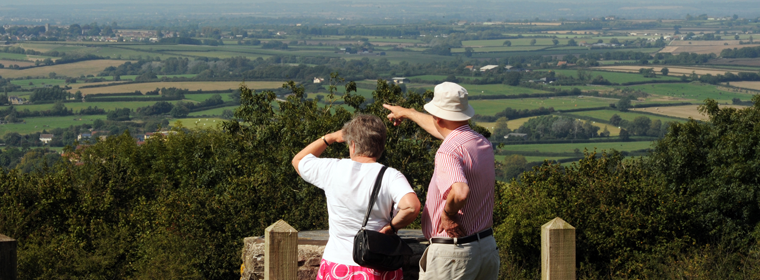
South Gloucestershire has a rich and varied landscape. Our area extends from the Severn Estuary across commons, ancient woodlands, rivers, and farmland, to the Cotswold scarp and the Bristol urban fringe.
In the heart of the Western Gateway partnership area, South Gloucestershire lies to the east and north of the City of Bristol and connects the West of England with the Midlands and Wales.
Our population is projected to rise to 354,000 by 2043, and this 25% increase is the sixth highest projected population growth in England.
South Gloucestershire has 3 economic enterprise areas at:
- Severnside
- Filton
- Emersons Green
And the South Gloucestershire ‘Tec Arc’ which includes the Bristol and Bath Science Park.
Over 40% of South Gloucestershire is a Green Belt which surrounds and separates Bristol and Bath.
Our location, environment, heritage, and access to the countryside are important reasons why South Gloucestershire is a great place to live, work and visit
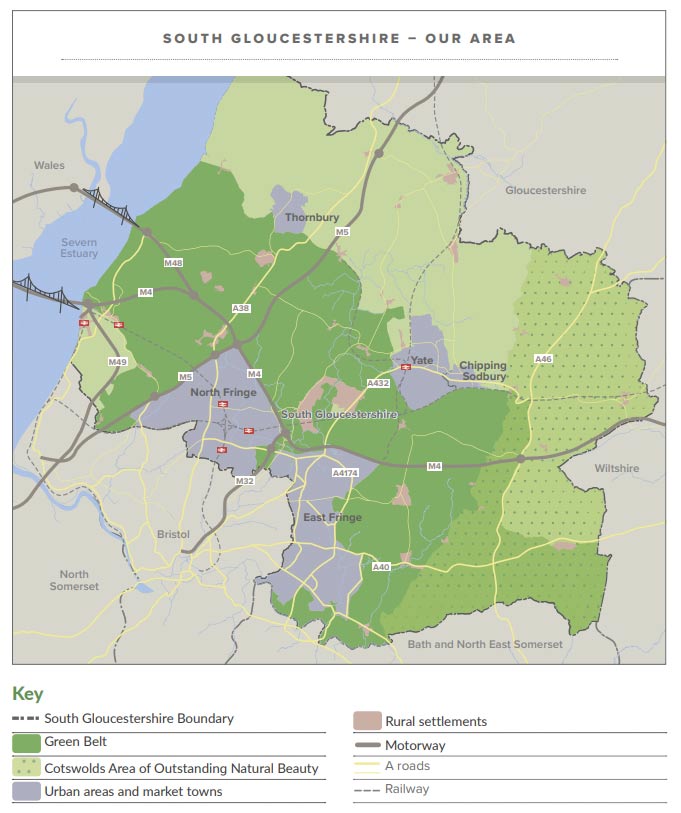
Heritage, culture and tourism
We have many heritage, cultural and tourist destinations, including:
- Dyrham Park
- Avon Valley Railway
- Grimsbury Community Farm
- Cotswold Way – National Trail
- Bristol Zoo’s Wild Place
- The Wave
These reflect our rich landscapes and heritage.
Conservation sites and rivers
South Gloucestershire has international, national, and local nature and geological conservation sites and areas.
This includes the:
- Severn Estuary Special Area of Conservation
- Cotswolds National Landscape (Area of Outstanding Natural Beauty)
There are also 22 nationally important Sites of Special Scientific Interest (SSSI).
The rivers Avon and Frome are vital wetland corridors and habitat for wildlife that support our ecological network.
Trees and woodlands
Tree canopy covers approximately 11% of South Gloucestershire.
This includes Lower Woods SSSI which is one of the largest ancient woodlands in the South West.
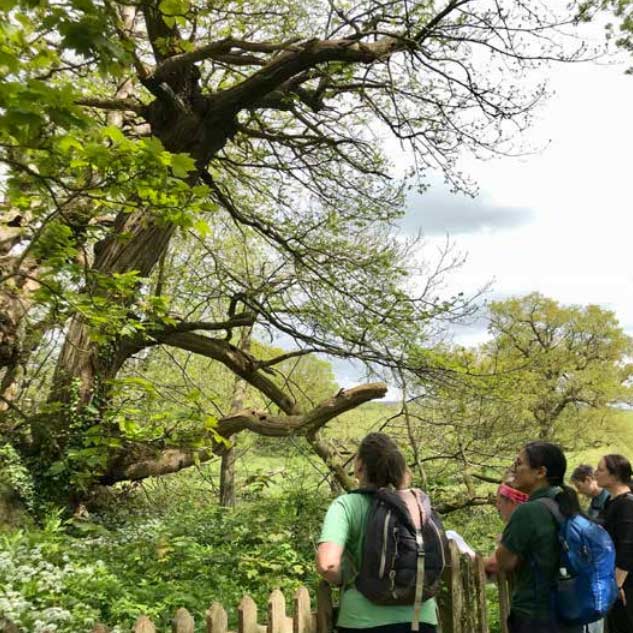
Public open spaces
Our parks and open spaces come in a wide range of shapes and sizes from urban parks, play areas, and allotments, to extensive woodlands, commons, and nature reserves.
Parks, nature reserves and other public open spaces provide vital green space for people and nature, right in the heart of our communities.
Improving how we manage and connect our public open spaces strengthens our green infrastructure network and makes our communities greener.
Public Rights of Way and highway verges
These are an important part of our green infrastructure that connect people and wildlife across our urban and rural areas.
We manage:
- 1,257km of Public Rights of Way
- 2.9 million m² of verges
We are improving the way we manage our verges for more habitat for nature.
The benefits of green infrastructure
The natural environment provides the water, food, clean air, shelter and other resources upon which all life on earth depends. Even though many of us live in towns and cities, we are part of and depend on nature for these resources too.
When green infrastructure is well planned, designed, managed and connected it makes the most of these natural resources and services which are known as ‘ecosystem services’.
This includes:
- natural flood management
- improved soil and water quality
- habitat for pollinating insects who we need to pollinate our crops and fruit trees
- locked in carbon that reduces greenhouse gases in the atmosphere
- cooling and shading to help us adapt and be resilient to climate change
- the resources we use for building and industry
Having high quality green infrastructure and greener places can give us:
- space for recreation to help our health and wellbeing
- space for nature to thrive
- space to grow our food
- green corridors and networks that people and wildlife can move through
- social spaces to meet outdoors
- more attractive and healthier places to live
- a more resilient economy by making our high streets and business areas somewhere people want to be
Our vision
‘greener places where people and nature thrive’

This strategy explains our vision and plan for green infrastructure to improve the environment and our area.
It includes how we will:
- create more habitat for nature
- have quality public open spaces
- manage green infrastructure to adapt to the changing climate and support health and wellbeing
- have green infrastructure at the heart of new development planning
- work with our partners, communities, and residents to have more, improved and better connected green infrastructure
Our council plan
Our Council Plan sets out the priorities for our work across the council.
It recognises the need to work together in response to the challenges of the climate and nature emergency and to reduce the inequality gap.
‘Action on the climate and our environment is a fundamental challenge which must inform and influence all our priorities and commitments.’
South Gloucestershire Council Plan 2020 – 2024
The ‘green thread’
The ‘green thread’ shows how we link our work with regional, national, and global commitments for the environment.
It highlights how we are connected to the environment, and the difference we can all make in our everyday lives.
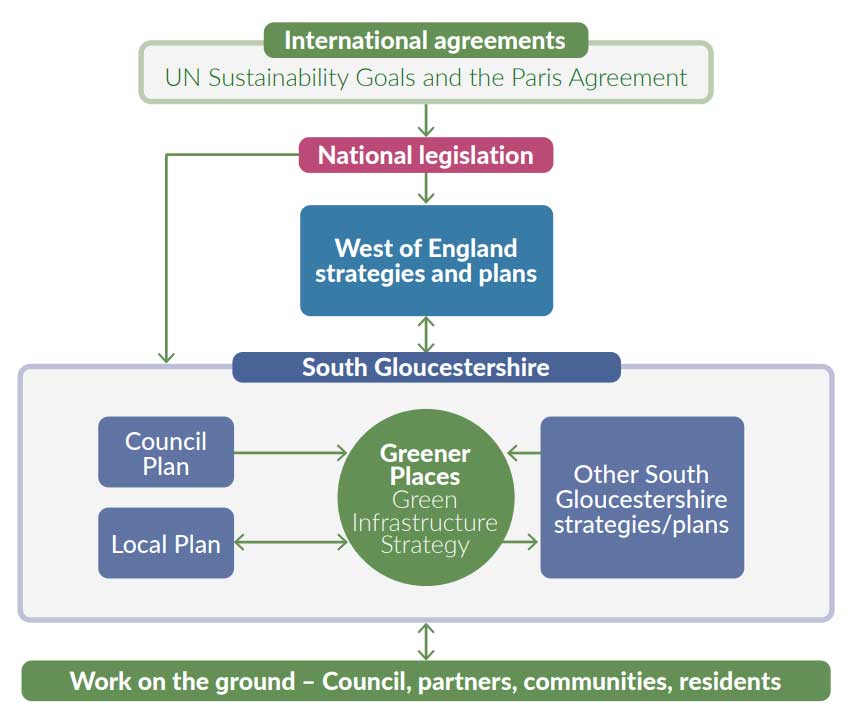
Our outcomes
Our outcomes and commitments have been shaped by what you have told us and contribute to the:
- West of England Joint Green Infrastructure Strategy 2020 (JGIS)
- Our Council Plan 2020 – 2024
- Climate Emergency Strategy
They also support the government’s 25 Year Environment Plan.
Our overall commitment for green infrastructure:
We will lead, enable and inspire action to put nature, climate change and health at the centre of all our plans and work through improving our green infrastructure.
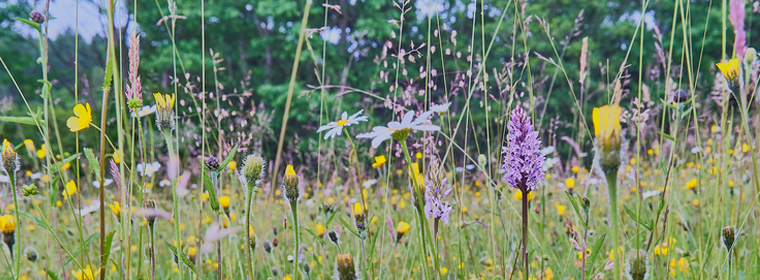
You can read our outcomes and commitments to take action.

Protected and restored nature
Our commitment
We will plan , design and manage green infrastructure to protect, restore, connect and increase nature.
To do this we will:
- include nature and the environment in all our work, plans and decisions
- have a ‘Local Nature Recovery Strategy’ that delivers on the Environment Act
- improve our woodland, wetland, and grassland ‘Nature Recovery Networks‘.
- work with our partners to take action to improve the water quality and biodiversity of our rivers
- have a ‘Pollinator Action Plan’ to restore and improve pollinator networks
- double our tree cover and contribute to The Forest of Avon Plan
- reduce pollution and litter (Resources and Waste Strategy 2020 and Beyond)
- improve water and soil quality
- reduce our use of pesticides
- increase populations of insects and other wildlife
Our work with residents, partners and other landowners will lead, enable, and inspire action to protect and restore nature across our area and give many benefits for people too.
Why this matters
Globally we are facing a dramatic decline in nature because the environment is under growing pressure from many causes, such as development, agriculture and the changing climate.
The Global Assessment Report on Biodiversity and Ecosystem Services 2019 (IPBES) says:
60%
of the worlds wild animals have been lost since 1970.
The UK Stage of Nature Report 2019 tells us that we have:
46%
fewer butterflies in the UK
95%
fewer hedgehogs, swifts and swallows across the West of England
Locally 20% of our trees are ash trees which are at high risk from ash dieback. This is having a major impact on our ash trees, woodlands and tree canopy cover across South Gloucestershire and the UK.
We need to act now to ensure we have a healthy, natural environment, now and for future generations where people and nature can thrive.

Greater resilience to the changing climate
Our commitment
We will respond to the Climate Emergency by strengthening our green infrastructure to support adaptation and resilience to the changing climate.
To do this we will:
- improve the size, quality, and connect green infrastructure to create stronger and bigger natural networks for nature and wildlife to move and thrive
- have a clear plan for our green infrastructure and nature recovery priorities to support adaptation and resilience to the changing climate
- deliver our commitments for green infrastructure and nature recovery in our yearly Climate Emergency Action Plan
- manage land we are responsible for so that it is resilient to the changing climate
- set up new ways to bring in more funding for our climate and nature emergency work
- work with our partners to have improved green infrastructure which supports communities to adapt and be resilient to the changing climate
- work with our partners to have better local walking and wheeling routes as set out in the South Gloucestershire Cycle Strategy, Joint Local Walking and Cycling Infrastructure Plan and Joint Local Transport Plan 4
Green infrastructure plays a vital role in capturing carbon from the atmosphere, through the natural life processes of trees, vegetation, algae, and plankton. This is called carbon sequestration.
When we lose our green and blue infrastructure (our waterways) carbon is released back into the atmosphere which is a big cause of climate change.
We must help protect captured carbon that is stored in plant materials, soils, sediment, rocks and ‘fossil fuels’.
We can do to this by restoring and creating natural habitats.
We will aim to:
- protect locked in carbon in our soil, trees and wetlands
- plant more trees to give cooling and shading
- use new and existing green infrastructure to provide natural resilience to flood and drought
- have well-connected, nature rich land and local public open spaces
- improve our walking, cycling and wheeling routes to encourage car free travel
This holistic approach will help us be resilient to the changing climate and have zero carbon communities where nature can flourish.
Why this matters
Average UK temperatures have increased by nearly 1°C since the 1980s. This impacts nature and people, including increased flooding, heat and drought.
The Intergovernmental Panel on Climate Change reports that:
30%
of species may be at risk of extinction if the climate warms by an average of 1.5°C
We know that climate change impacts on those already experiencing inequality more.
Globally, we need to act to help achieve the United Nations 2030 Agenda for Sustainable Development central commitment to ‘leave no one behind’.

Sustainable water management
Our commitment
We will take action to respond to and manage flood and drought risk, improve water quality, restore our rivers, and connect wetland habitat.
To do this we will:
- work with our partners in the Bristol Avon Catchment Partnership
- connect and restore wetland habitat in our Nature Recovery Network, including the Severn Vale
- deliver the River Frome Catchment Plan
- provide guidance to manage flood and drought risk through our Supplementary Planning Documents for new development
- protect our communities and enhance nature by delivering the Avonmouth and Severnside Enterprise Area (ASEA) Ecological Mitigation and Flood Defence Project
Why this matters
The rivers Avon and Frome give vital wetland habitat and networks for wildlife.
The Severn Estuary and foreshore is an internationally protected Ramsar area due to its global significance for wildlife including migrant birds.
We also have many ponds, lakes, streams, drainage ditches and watercourses across our area.
Locally and globally our river catchments, lakes, ponds, coastal areas, and wetlands are under growing pressures. This comes from pollution, development, agriculture, unsustainable fishing, and climate change.
The World’s Forgotten Fishes Report, World Wildlife Fund, 2021 says:
33%
of freshwater fish are threatened with extinction
The government wants all waterways in England to meet good ecological status by 2027.
The Bristol and Avon catchment has only:
11%
of waterways classed as having good ecological status
This shows how much work there is to be done to restore our rivers across the UK.
We are already seeing flooding and rising sea levels because of climate change.
Our Local Flood Risk Management Plan says what we are doing to manage flood risk.
This includes using green infrastructure to give natural and sustainable flood management in existing communities, new developments and roads.
Well designed and managed green and blue infrastructure helps us to:
- respond to and manage flood and drought risks
- create resilient communities
- improve water quality
- have connected wetlands that help nature

Improved health and wellbeing for all
Our commitment
We will improve health and wellbeing and reduce inequalities by creating and maintaining greener places which boost the health and wellbeing of everyone.
To do this we will:
- work with our equality and diversity groups to deliver and review progress on our Equality Impact Assessment and Action Plan and Council Equality Plan
- deliver green infrastructure commitments in the Joint Health and Wellbeing Strategy
- plant more trees and have better walking and wheeling routes to reduce exposure to air pollution and increase active travel
- increase ‘green social prescribing’ as set out in the West of England Nature Partnership Mainstreaming Green Care Plan
- help children and young people through the Children, young people and families partnership and Early Help Strategy 2019-2024
Why this matters
A healthy environment is essential for our health and wellbeing. Good green infrastructure is central to improving the quality of our air, water, soil, and biodiversity.
Greener places help us:
- relax
- connect with nature
- play sport
- go walking or running
- grow food in our communities
Research from the The University of Exeter shows that:
2 hours
a week in nature improves health and wellbeing
Being able to enjoy nature has been even more important during the Covid-19 pandemic. Making our places greener is at the heart of our recovery and regeneration work.
We want everyone to be able to access and enjoy local, high quality green spaces in our communities. This will help improve health and wellbeing and reduce inequalities

Sustainable places
Our commitment
We will maximise the multiple benefits of green infrastructure in both new and existing communities to create nature rich, resilient places where people and nature thrive.
To do this we will:
- manage the green spaces and networks that we are responsible for to create sustainable places
- use our core strategy to make new communities sustainable
- refer to our supplementary planning documents when planning new developments
- make sure our core strategy is up to date with the latest national requirements and best practice
- include green infrastructure and biodiversity at the start of design for all new projects
- take the lead in increasing biodiversity when planning infrastructure and transport projects
- plan and design new development in line with national requirements and Local Plan 2020 priorities and principles
Why this matters
Meeting the needs of our growing population across the West of England is both a challenge and an opportunity.
We must balance the need for new housing and infrastructure with the pressures on our natural environment.
The United Nations Department of Social and Economic Development says that:
68%
of people across the world will be living in built-up areas by 2050
In South Gloucestershire our population is made up of:
- 63% of people living in suburban areas (on the outskirts of town)
- 17% of people living in market towns
- 20% of people living in villages and rural areas
Improving our green infrastructure is important to help communities adapt and be resilient to the changing climate.
We must make sure that the environment and how it supports us is thought about when we start planning for new communities.
Creating nature rich sustainable green places will benefit everyone.
We encourage standards like Building with Nature accreditation and BREEAM Certification to be used at the start and heart of design.
We have clear guidance on ‘what good looks like’ and standards that need to be met as part of the planning process in our Supplementary Planning Documents.
This helps us to have high quality sustainable development.

Valued healthy landscapes
Our commitment
We will create and manage green infrastructure to conserve and enhance our landscapes, heritage, sense of place and culture.
To do this we will:
- work with our neighbouring authorities to improve and maintain green infrastructure which extends across our region
- update our planning policy to improve how we care for and celebrate our historic, archaeological, natural, and cultural heritage (including our landscapes and conversation sites)
- restore and improve Hawkesbury and Inglestone common with funding from Countryside Stewardship
- enhance and restore our valued landscapes through green infrastructure programmes including River Frome Reconnected and Common Connections
- protect and maintain our Heritage Routes, National Trails, and Public Rights of Way
- work with our partners in the Cotswolds National Landscape Partnership
Why this matters
Our landscape character, views, and historic, archaeological, and natural heritage are an important part of our places and who we are.
We also have a legal duty to protect and manage our environment and heritage.
Our landscapes and heritage are increasingly at risk from climate change, nature loss, land use pressures and rising maintenance costs.
As we explain in our Local Plan 2020, good planning, design, and management of our green infrastructure helps us ‘to protect and enhance the character, distinctiveness, quality and intrinsic features of the local landscape’
We also want to encourage everyone to get involved and feel connected with our natural and built heritage. To access, enjoy and celebrate what matters to us, to improve wellbeing and bring communities together.

Sustainable and local food production
Our commitment
We will protect the best agricultural land and enhance our pollinator network and increase opportunities for local food production and food markets.
To do this we will:
- take into account the need to protect the best soils and agricultural land when planning new development
- improve habitat for bees and insects through a Pollinator Action Plan
- have a grazing policy for council owned land that helps food production, biodiversity, and carbon sequestration
- update our allotment regulations to make sure they help the climate and nature emergency action
- have a hedgerow management policy for the hedges we manage (which we will share with other landowners)
- work with local farmers and landowners to get investment to manage land sustainably through Environmental Land Management Schemes (ELMS)
- work with local food producers, businesses, our partners, and residents to support local food production and markets
- restore our orchards and plant more fruit trees and new community orchards on council owned land
Why this matters
Agricultural land use covers approximately half of our area and includes land managed for pasture, crops, and mixed farming.
We also have allotments, orchards and community food growing networks including the South West Food Hub.
Soil health is vital. A single hectare of soil can store and filter enough water for 1000 people. But soil can take hundreds of years to form.
Since 1945 (after World War 2) policy, machinery, and intensive food production has caused overgrazing, pesticide use and removal of hedgerows.
Because of this our soils, environment and landscapes are not as good as they were.
Globally around:
75%
of crops grown need to be pollinated by insects
But insect numbers are plummeting, causing the Nature Emergency and increasing pressure on our food production and economy.
Sustainable local food production helps to:
- reduce our carbon footprint, improve soil health and water quality
- restore hedgerows, woodlands, and species rich meadows
- increase pollinator habitat and networks
- improve carbon storage
- improve our health and economy
- bring communities together through local food growing and markets

A green and resilient economy
Our commitment
We will optimise the role and contribution of green infrastructure to support a green and resilient economy.
To do this we will:
- work with our partners to make our high streets and communities greener
- work with our partners to make the most of our green infrastructure for local recreation and tourism
- look after the green places and networks we manage
- get external funding to restore Kingswood Park as part of the regeneration of Kingswood
- work with our partners to develop opportunities for green skills training, work experience, and apprenticeships in green space management (including training for volunteers)
- have a tree nursery and contract growing to meet our tree planting goals
- get funding for our green infrastructure priorities for people and nature
- have opportunities for investment in biodiversity on our land
Why this matters
High quality green infrastructure helps to create greener, better connected and thriving places which are more attractive to customers and businesses.
Greener places improve our quality of life, support health and wellbeing and reduce pressures and costs on health and social care.
The Public Health England – Improving access to green space 2020 review says that £2.1 billion per year could be saved in health costs if everyone in England had greenspace to do physical activity.
The Environment Agency estimates that woodland in the West of England is worth:
£717m
in carbon capture, air quality improvements and hazard regulation
This figure is highlighted in The Forest of Avon Plan.
Delivering value for money is an overarching theme of our Council Plan and is a primary role of the council.
The HM Treasury Dasgupta Review 2021 – The Economics of Biodiversity highlights the urgent need to consider nature in all we do.
It gives a road map for a green economy and a sustainable future including to:
- only use resources and make demands on nature that we can replace and increase
- change how we measure the success of society to guide us on a more sustainable path
It also says that our financial, educational, and wider systems need to be changed now and continued into the future.
We need to value nature across all areas of our lives and when we make decisions.

Stronger working together
Our commitment
We will work with everyone to deliver our commitments to achieve shared goals for green infrastructure.
Residents
Including the South Gloucestershire Equalities Forum.
Regional partners
- West of England Joint Green Infrastructure Strategy 2020
- West of England Nature Partnership (WENP)
- The Forest of Avon Plan
- Bristol Avon Catchment Partnership
- Cotswold National Landscape Partnership (AONB)
Town and parish councils
Including work together to prepare and deliver Local Nature Action Plans to help restore nature.
Community groups and volunteers
Including our Community Spaces Network and Climate Emergency Community Engagement Group and CVS South Gloucestershire.
Businesses and employers
Including the Local Strategic Partnership.
Local farmers and landowners
Including Environmental Land Management Schemes.
Why this matters
We want everyone to feel included and inspired to get involved and to know that their contribution is recognised and valued.
We all have a part to play in our goals for the environment.
Working together is how we will achieve our vision for ‘greener places where people and nature thrive.’
Our green infrastructure network
Identifying and mapping our main green infrastructure network and features is at the heart of work to achieve our priorities for the environment, and to help us plan new housing and development through our Local Plan.
To do this we also work with our partners across the region because our green infrastructure links to the wider network. This is especially important for our work to respond to the Climate and Nature Emergency.
Our Local Plan will set out a new green infrastructure policy for South Gloucestershire which will be guided by the Environment Act and new planning legislation as explained in our Green Infrastructure Supplementary Planning Document 2021.
To update our evidence, we are investigating nine potential green infrastructure corridors for South Gloucestershire across our network. This will help us protect and enhance existing assets and connect and extend our green infrastructure and Nature Recovery Network.
It is important to highlight that these are potential corridors which are being investigated. These corridors also have a different purpose to green belt land and are not additional green belt.
Our green infrastructure programmes
To achieve our green infrastructure outcomes, we are working with our partners to prepare, fund and deliver our priority programmes.
This includes 2 broad categories:
- Locality programmes – in a particular location or area, such as the River Frome Reconnected and Kingswood Park restoration programmes.
- Network scale programmes – for a specific type of green infrastructure or habitat type, such as our programmes to change highway verge management and doubling of tree canopy cover.
For each programme, more detailed projects are being prepared to deliver green infrastructure investment within an area, or across the network.
All programmes are at different stages, and more programmes will be added in the future in response to new priorities and opportunities.
Current locality programmes
- Common Connections – Bristol Eastern fringe
To restore and connect habitat including linking registered common land, unimproved grasslands, woodlands and associated habitats along the South Gloucestershire/East Bristol urban fringe.
- River Frome Reconnected – River Frome catchment
To restore and improve the health and resilience of the Bristol Frome river and its catchment, and make sure the river can be accessed and enjoyed by all.
- Avonmouth and Severnside Enterprise area (ASEA) Flood Resilience and Ecological Mitigation project – Severnside
To improve flood defence, wetland habitat and public access across the Severnside area. - String of Pearls – Severn vale and estuary
To connect and restore wetland habitat of the protected Ramsar area of the low lying vales and coast of the Severn Estuary to support resilience to the changing climate in this area and improve biodiversity and public access. - WaterSpace – River Avon catchment
To improve the green spaces and rights of way along the River Avon between Bath and Bristol. - Lower Woods Link – Lower Woods to the Cotswolds
To create additional buffer habitats around Lower Woods and improve woodland links to Cotswold woodlands. Lower Woods is the most extensive area of ancient woodland in the West of England. - Kingswood Park – Kingswood
To restore and enhance the heritage, landscape and facilities of Kingswood Park to create an accessible green space which is resilient to the changing climate and where people can come together. The project will also link to the Kingswood Town Centre regeneration programme, making Kingswood a better place to live, work and visit. - Grimsbury Community Farm centre for nature restoration and climate change adaption – Kingswood
A council owned and managed community farm, providing a key public open space resource and facilities for play and recreation, reducing health inequalities, farming education, skills and training and a showcase for sustainable land management. - Hawkesbury and Inglestone Common – Hawkesbury and Inglestone
Assley, Hareley, Inglestone and Hawkesbury Commons are managed under a Higher Tier Countryside Stewardship scheme which enables the council to work with the local community to manage these commons for the benefit of all who use them. They will be enhanced for nature through tree planting, scrub management, grassland and pond enhancements. - Yate spur shared use path – Yate
To connect Yate with the Bristol and Bath Railway Path, by providing a continuous off carriageway ‘green corridor’ for commuting, leisure and recreation.
Current network scale programmes
- Tree planting – doubling of tree canopy cover
To plant and establish trees across South Gloucestershire by 2030, to double tree canopy cover at maturity. - Nature Recovery Network
To achieve a bigger, better, more and connected ecological network across our area. - Highway verges for nature
Change how we manage highway verges and council owned green spaces to provide more habitat for nature. - Retrofit for nature
Make space for nature within existing buildings and the road network. - Greener communities
Greening our priority neighbourhood communities to reduce inequalities and improve the environment for people, place and nature.
Our Green Spaces Management Plan
The council is responsible for over 11,000 areas of green space, 1,257 km of Public Rights of Way and 2.9 million m² of verges. We work with our partners, and residents to care for these spaces and networks.
Our parks and open spaces come in a range of shapes and sizes from urban parks, play areas, and allotments, to extensive woodlands, commons, and nature reserves. They provide vital green space in our communities for people and nature.
The Public Rights of Way (PROW) network connects our green spaces and communities, providing important ‘highways for people and nature’ across our green infrastructure network and area.
Managing and maintaining these green spaces and networks is essential to meet legal requirements and achieve healthy and sustainable communities for people, places, and nature.
We need to manage our green spaces, so they are attractive, safe and welcoming for everyone. This includes improving accessibility, reducing litter and providing rich habitat for nature.
Our green space groups
Our green space groups bring together sites which have similar purposes and management requirements to support our work to care for and improve them.
List of our green space groups
- Formal Parks
- Small amenity green space
- Outdoor sports facilities
- Historic Parks and Gardens
- Trees and woodlands
- Allotments
- Community farm
- Community orchards
- Cemeteries (operating)
- Neighbourhood recreation parks
- Hedgerows
- Closed churchyards and other burial grounds
- Local community open spaces
- Green corridors
- War memorials
- Countryside parks
- Green roundabouts
- Picnic sites
- Local Nature Reserves
- Blue infrastructure
- Car parks
- Commons
- Play and activity areas
- Civic spaces and high streets
Built facilities in our green spaces provide a wide range of important functions.
This includes community centres, pavilions, cafes and toilets which improve accessibility, support a wide range of activities and add high social, environmental and economic value.
How we manage our green spaces
We use an asset management approach to review and manage our green spaces. This helps us to focus resources where it is needed most, to plan our budgets and apply for other funding.
The benefits, contribution, and value of our green spaces for people, places and nature has been highlighted in recent years. In particular, the Covid-19 pandemic has led to increased use of green spaces and shone a light on their role and value.
Valuing the full ‘natural capital’ benefits of green spaces highlights the return on investment of funding and the need for maintenance and improvement.
Volunteers contribute many hours of vital work each year to help us manage and care for our green spaces and nature, with a value of well over £125,000 of volunteer hours per year.
Our Community Spaces Network includes voluntary groups and individuals who work with us and our partners to care for local green spaces. This includes Friends groups, Public Rights of Way volunteers, local nature groups, wildlife special interest groups and ‘In Bloom’ groups.
People from all walks of life find volunteering to care for green spaces and nature in their community enjoyable and rewarding. Volunteering offers many benefits including the chance to meet new people, learn new skills and boost health and wellbeing.
For more information about helping look after your local environment or to find a local community group visit Friends and conservation groups or sign up for our Community Spaces newsletter.
- Over £2.7million of external funding secured between 2016 and 2021 to improve our green spaces.
- The cost to the council of managing our green spaces is around £12 for each resident every year.
- Our public open spaces also play an important role in providing a venue for a wide range of local businesses and community events which bring social, health, economic and cultural benefits. This includes community events, educational visits, Forest Schools, personal trainers and film locations.
- Information about hiring public open space is available at Hire of Public Open Space.
- We will continue to update our green spaces webpages to improve and provide more information about how we manage our green spaces.
Find out more: Green Infrastructure Strategy.
Action Plan
Read our Action Plan to find out how we will put this strategy into action and how you can get involved.
We will review, report on progress and update our Action Plan each year. We will refresh this strategy in line with Council Plan priorities and changes in legislation.
You can read the full strategy document 2021 if you would like to know more.
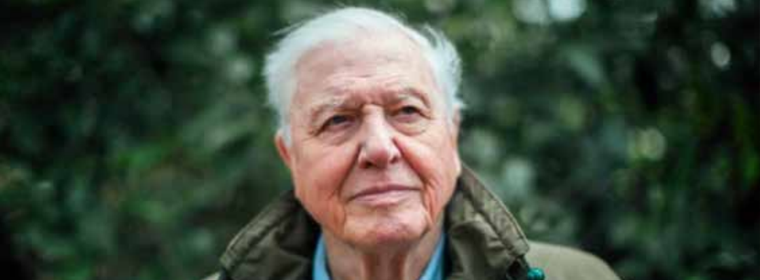
“The truth is the natural world is changing. And we are totally dependent on that world. It provides our food, water and air.
It is the most precious thing we have, and we need to defend it.”
Sir David Attenborough, BBC 2020